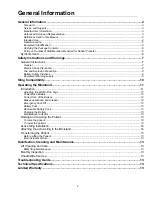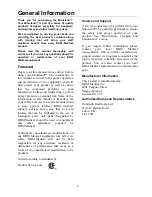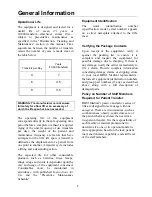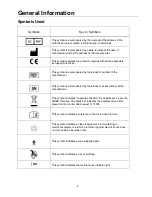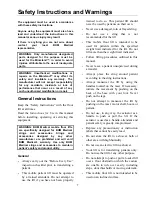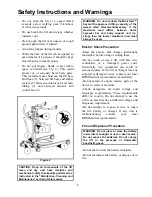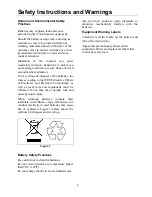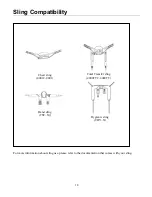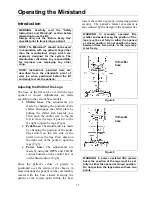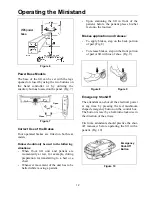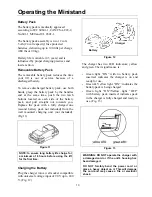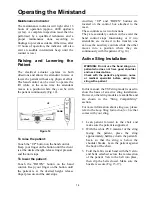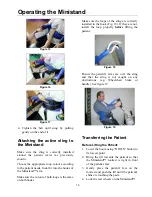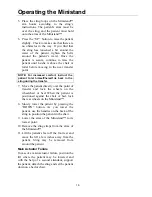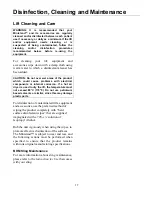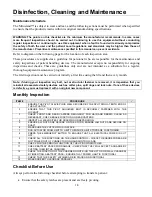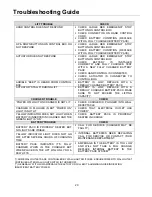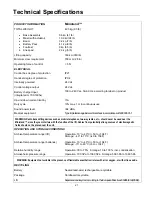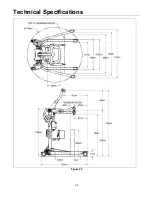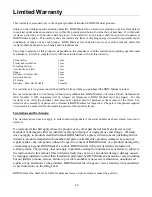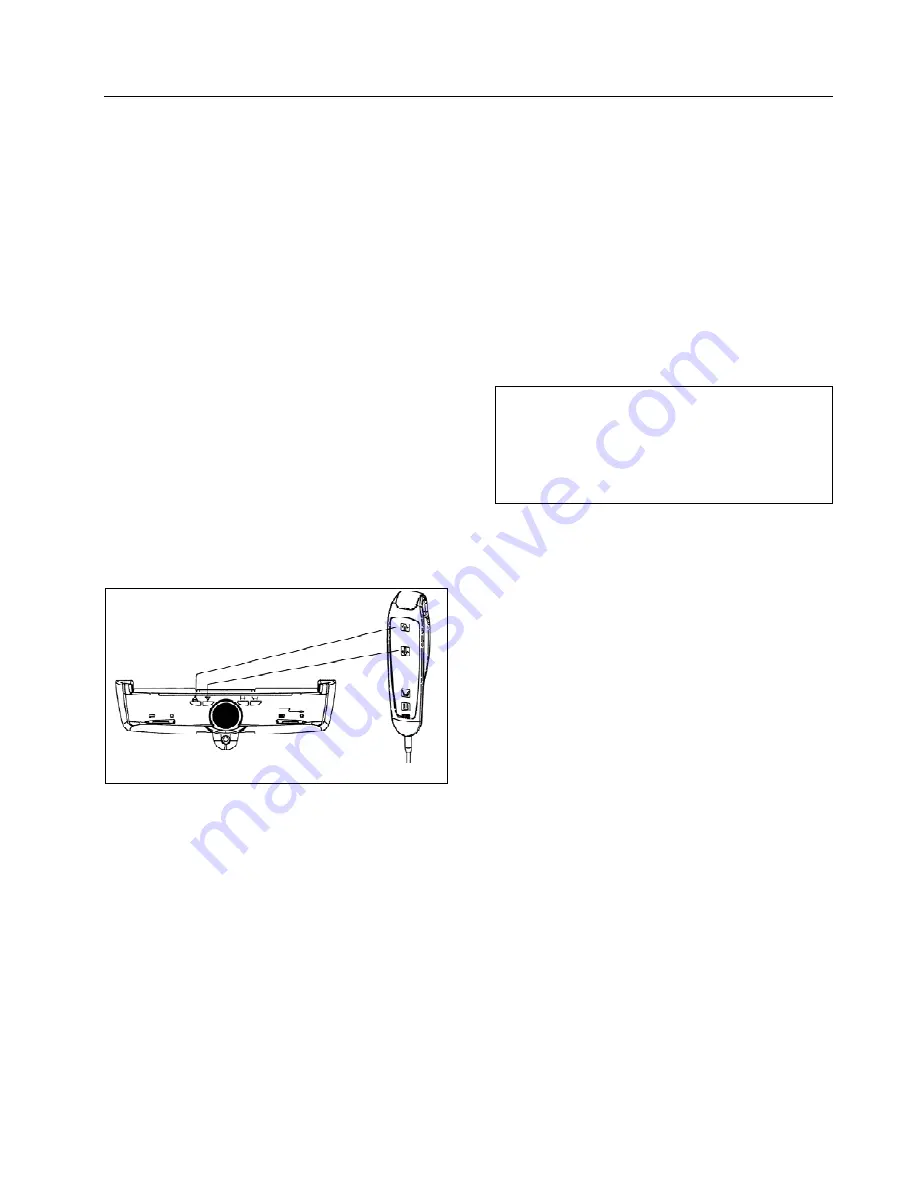
Operating the Ministand
14
Maintenance Indicator
The maintenance indicator will light after 16
hours of operation (approx. 4000 up/down
cycles). A complete inspection must then be
performed by a qualified technician and a
proper maintenance done according to
findings to prevent accidents. Otherwise, after
19 hours of operation, the indicator will also
emit an audible intermittent beep until the
counter is reset.
Raising and Lowering the
Patient
The electrical actuator operates in both
directions and allows the attendant to raise or
lower the patient without any physical effort.
The hand control can be used to operate the
lift while at the same time the attendant
moves to a position where they can be with
the patient continuously (Fig. 14).
UP
DOWN
Figure 14
To raise the patient:
Touch the “UP” button on the hand control.
Keep your finger on the button until the client
is at the desired height, release finger pressure
and the unit stops.
To lower the patient:
Touch the “DOWN” button on the hand
control. Keep your finger on the button until
the patient is at the desired height, release
finger pressure and the unit stops.
Auxiliary “UP” and “DOWN” buttons are
located on the control box attached to the
mast.
These controls serve two functions:
They are secondary controls in the event the
hand control stops functioning or if two
attendants are involved in the transfer, one
can use the auxiliary controls while the other
moves into a position where they are
continuously with the patient. (Fig. 14)
Active Sling Installation
WARNING: Do not use the band sling on a
patient who does not have good shoulder
and neck muscle-tone.
Check with the patient’s physician, nurse
or medical specialist before using this
sling with a patient
In this manual, the TST sling model is used to
show the basis of an active sling installation.
However, other sling models are available and
are shown in the “Sling Compatibility”
section.
For more information about sling use, please
refer to the
Loop Sling
Instruction for Use
that
comes with your sling.
1.
Lean patient forward in the chair and
make sure the patient is supported.
2.
With the white PVC material of the sling
facing the patient, place the sling
approximately halfway down the patient’s
back, so that the sling is below the
shoulder blades. Lean the patient against
the back of the chair.
3.
Fold the fabric waist band with the Velcro
and belts attached across the mid-section
of the patient. Velcro the belt into place,
then clip the belts closed. Make sure the
buckle is secure (Fig. 15-17).



